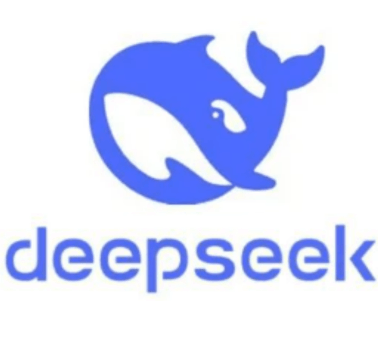使用 Ollama、Llama 3.1 和 Milvus 实现Function Calling 功能
将函数调用(Function Calling)与 LLM 相结合能够扩展您的 AI 应用的能力。通过将您的大语言模型(LLM)与用户定义的 Function 或 API 集成,您可以搭建高效的应用,解决实际问题。
将函数调用(Function Calling)与 LLM 相结合能够扩展您的 AI 应用的能力。通过将您的大语言模型(LLM)与用户定义的 Function 或 API 集成,您可以搭建高效的应用,解决实际问题。
本文将介绍如何将 Llama 3.1 与 Milvus 和 API 等外部工具集成,构建具备上下文感知能力的应用。
01
Function Calling 简介
诸如 GPT-4、Mistral Nemo 和 Llama 3.1 之类的大语言模型(LLMs)现在可以检测何时需要调用函数,然后输出包含调用该函数参数的 JSON。这一突破能够有效提升您的 AI 应用的能力。
Functional calling 助力开发人员:
-
搭建 LLM 驱动数据提取和标记解决方案(例如:从维基百科文章中提取人物名字)
-
开发能够将自然语言转换为 API 命令或数据库查询语句的应用
-
打造对话式的知识库搜索引擎
使用的工具
-
Ollama: 支持在您的笔记本电脑上使用强大的 LLM,有效简化本地操作流程。
-
Milvus: 用于高效存储和检索数据的首选向量数据库
-
8B 模型的升级版本,支持多语言、更长的上下文长度(128K)和利用工具进行操作。

02
使用 Llama 3.1 和 Ollama
Llama 3.1 已经在 Function calling 方面进行了微调。它支持通过单一、嵌套和并行的方式调用函数,同时支持多轮调用函数。借助 Llama 3.1 您的 AI 应用可以处理涉及多个并行步骤的复杂任务。
在本文示例中,我们将通过不同的函数来模拟用于获取航班时间的 API,然后在 Milvus 中执行搜索。Llama 3.1 将根据用户的查询决定调用哪个函数。
03
安装依赖
首先,使用 Ollama 下载 Llama 3.1:
`ollama run llama3.1`
上述指令会将模型下载至您的笔记本电脑,您可以通过 Ollama 使用 Llama 3.1。接着,安装依赖:
! pip install ollama openai "pymilvus[model]"
本文安装 Milvus Lite 以及模型插件。Milvus 的模型插件支持用户使用 Milvus 中集成的模型将数据转换为 Embedding 向量。
04
将数据插入 Milvus
将数据插入至 Milvus 中。后续,Llama 3.1 将判断相关性并决定是否搜索此步骤中插入的数据。
05
创建 Collection 并插入数据
from pymilvus import MilvusClient, model``embedding_fn = model.DefaultEmbeddingFunction()`` ``docs = [` `"Artificial intelligence was founded as an academic discipline in 1956.",` `"Alan Turing was the first person to conduct substantial research in AI.",` `"Born in Maida Vale, London, Turing was raised in southern England.",``]`` ``vectors = embedding_fn.encode_documents(docs)`` ``# The output vector has 768 dimensions, matching the collection that we just created.``print("Dim:", embedding_fn.dim, vectors[0].shape) # Dim: 768 (768,)`` ``# Each entity has id, vector representation, raw text, and a subject label.``data = [` `{"id": i, "vector": vectors[i], "text": docs[i], "subject": "history"}` `for i in range(len(vectors))``]`` ``print("Data has", len(data), "entities, each with fields: ", data[0].keys())``print("Vector dim:", len(data[0]["vector"]))`` ``# Create a collection and insert the data``client = MilvusClient('./milvus_local.db')`` ``client.create_collection(` `collection_name="demo_collection",` `dimension=768, # The vectors we will use in this demo has 768 dimensions``)`` ``client.insert(collection_name="demo_collection", data=data)
新创建的 Collection 中含有 3 个元素。
06
定义需要使用的 Functions
本文将定义两个 Function。第一个与 API call 相似,用于获取航班时间。第二个用于在 Milvus 中执行搜索和查询。
from pymilvus import model``import json``import ollama``embedding_fn = model.DefaultEmbeddingFunction()`` ``# Simulates an API call to get flight times``# In a real application, this would fetch data from a live database or API``def get_flight_times(departure: str, arrival: str) -> str:` `flights = {` `'NYC-LAX': {'departure': '08:00 AM', 'arrival': '11:30 AM', 'duration': '5h 30m'},` `'LAX-NYC': {'departure': '02:00 PM', 'arrival': '10:30 PM', 'duration': '5h 30m'},` `'LHR-JFK': {'departure': '10:00 AM', 'arrival': '01:00 PM', 'duration': '8h 00m'},` `'JFK-LHR': {'departure': '09:00 PM', 'arrival': '09:00 AM', 'duration': '7h 00m'},` `'CDG-DXB': {'departure': '11:00 AM', 'arrival': '08:00 PM', 'duration': '6h 00m'},` `'DXB-CDG': {'departure': '03:00 AM', 'arrival': '07:30 AM', 'duration': '7h 30m'},` `}`` ` `key = f'{departure}-{arrival}'.upper()` `return json.dumps(flights.get(key, {'error': 'Flight not found'}))`` ``# Search data related to Artificial Intelligence in a vector database``def search_data_in_vector_db(query: str) -> str:` `query_vectors = embedding_fn.encode_queries([query])` `res = client.search(` `collection_name="demo_collection",` `data=query_vectors,` `limit=2,` `output_fields=["text", "subject"], # specifies fields to be returned` `)`` ` `print(res)` `return json.dumps(res)
07
向 LLM 提供指令并使用定义的 Functions
向 LLM 提供指令。这样一来,LLM 可以使用我们上述定义的 Functions。
def run(model: str, question: str):` `client = ollama.Client()`` ` `# Initialize conversation with a user query` `messages = [{"role": "user", "content": question}]`` ` `# First API call: Send the query and function description to the model` `response = client.chat(` `model=model,` `messages=messages,` `tools=[` `{` `"type": "function",` `"function": {` `"name": "get_flight_times",` `"description": "Get the flight times between two cities",` `"parameters": {` `"type": "object",` `"properties": {` `"departure": {` `"type": "string",` `"description": "The departure city (airport code)",` `},` `"arrival": {` `"type": "string",` `"description": "The arrival city (airport code)",` `},` `},` `"required": ["departure", "arrival"],` `},` `},` `},` `{` `"type": "function",` `"function": {` `"name": "search_data_in_vector_db",` `"description": "Search about Artificial Intelligence data in a vector database",` `"parameters": {` `"type": "object",` `"properties": {` `"query": {` `"type": "string",` `"description": "The search query",` `},` `},` `"required": ["query"],` `},` `},` `},` `],` `)`` ` `# Add the model's response to the conversation history` `messages.append(response["message"])`` ` `# Check if the model decided to use the provided function`` ` `if not response["message"].get("tool_calls"):` `print("The model didn't use the function. Its response was:")` `print(response["message"]["content"])` `return`` ` `# Process function calls made by the model` `if response["message"].get("tool_calls"):` `available_functions = {` `"get_flight_times": get_flight_times,` `"search_data_in_vector_db": search_data_in_vector_db,` `}`` ` `for tool in response["message"]["tool_calls"]:` `function_to_call = available_functions[tool["function"]["name"]]` `function_args = tool["function"]["arguments"]` `function_response = function_to_call(**function_args)`` ` `# Add function response to the conversation` `messages.append(` `{` `"role": "tool",` `"content": function_response,` `}` `)`` ` `# Second API call: Get final response from the model` `final_response = client.chat(model=model, messages=messages)`` ` `print(final_response["message"]["content"])
08
使用示例
让我们看看是否能顺利查询到特定航班的时间:
question = "What is the flight time from New York (NYC) to Los Angeles (LAX)?"`` ``run('llama3.1', question)
结果如下:
The flight time from New York (JFK/LGA/EWR) to Los Angeles (LAX) is approximately 5 hours and 30 minutes. However, please note that this time may vary depending on the airline, flight schedule, and any potential layovers or delays. It's always best to check with your airline for the most up-to-date and accurate flight information.
现在,让我们看看 Llama 3.1 是否能使用 Milvus 进行向量搜索。
question = "What is Artificial Intelligence?"`` ``run('llama3.1', question)
以下为 Milvus 搜索结果:
`data: ["[{'id': 0, 'distance': 0.4702666699886322, 'entity': {'text': 'Artificial intelligence was founded as an academic discipline in 1956.', 'subject': 'history'}}, {'id': 1, 'distance': 0.2702862620353699, 'entity': {'text': 'Alan Turing was the first person to conduct substantial research in AI.', 'subject': 'history'}}]"] , extra_info: {'cost': 0}`
09
总结
Function Calling 与 LLM 的结合为我们创造了无限可能。通过将Llama 3.1与 外部工具(如 Milvus)和 API 集成,您可以构建具备上下文感知能力的应用,从而满足特定用例和解决实际问题。
如何系统的去学习大模型LLM ?
大模型时代,火爆出圈的LLM大模型让程序员们开始重新评估自己的本领。 “AI会取代那些行业?”“谁的饭碗又将不保了?”等问题热议不断。
事实上,抢你饭碗的不是AI,而是会利用AI的人。
继科大讯飞、阿里、华为等巨头公司发布AI产品后,很多中小企业也陆续进场!超高年薪,挖掘AI大模型人才! 如今大厂老板们,也更倾向于会AI的人,普通程序员,还有应对的机会吗?
与其焦虑……
不如成为「掌握AI工具的技术人」,毕竟AI时代,谁先尝试,谁就能占得先机!
但是LLM相关的内容很多,现在网上的老课程老教材关于LLM又太少。所以现在小白入门就只能靠自学,学习成本和门槛很高。
针对所有自学遇到困难的同学们,我帮大家系统梳理大模型学习脉络,将这份 LLM大模型资料 分享出来:包括LLM大模型书籍、640套大模型行业报告、LLM大模型学习视频、LLM大模型学习路线、开源大模型学习教程等, 😝有需要的小伙伴,可以 扫描下方二维码领取🆓↓↓↓

一、LLM大模型经典书籍
AI大模型已经成为了当今科技领域的一大热点,那以下这些大模型书籍就是非常不错的学习资源。

二、640套LLM大模型报告合集
这套包含640份报告的合集,涵盖了大模型的理论研究、技术实现、行业应用等多个方面。无论您是科研人员、工程师,还是对AI大模型感兴趣的爱好者,这套报告合集都将为您提供宝贵的信息和启示。(几乎涵盖所有行业)

三、LLM大模型系列视频教程

四、LLM大模型开源教程(LLaLA/Meta/chatglm/chatgpt)

LLM大模型学习路线 ↓
阶段1:AI大模型时代的基础理解
-
目标:了解AI大模型的基本概念、发展历程和核心原理。
-
内容:
- L1.1 人工智能简述与大模型起源
- L1.2 大模型与通用人工智能
- L1.3 GPT模型的发展历程
- L1.4 模型工程
- L1.4.1 知识大模型
- L1.4.2 生产大模型
- L1.4.3 模型工程方法论
- L1.4.4 模型工程实践
- L1.5 GPT应用案例
阶段2:AI大模型API应用开发工程
-
目标:掌握AI大模型API的使用和开发,以及相关的编程技能。
-
内容:
- L2.1 API接口
- L2.1.1 OpenAI API接口
- L2.1.2 Python接口接入
- L2.1.3 BOT工具类框架
- L2.1.4 代码示例
- L2.2 Prompt框架
- L2.3 流水线工程
- L2.4 总结与展望
阶段3:AI大模型应用架构实践
-
目标:深入理解AI大模型的应用架构,并能够进行私有化部署。
-
内容:
- L3.1 Agent模型框架
- L3.2 MetaGPT
- L3.3 ChatGLM
- L3.4 LLAMA
- L3.5 其他大模型介绍
阶段4:AI大模型私有化部署
-
目标:掌握多种AI大模型的私有化部署,包括多模态和特定领域模型。
-
内容:
- L4.1 模型私有化部署概述
- L4.2 模型私有化部署的关键技术
- L4.3 模型私有化部署的实施步骤
- L4.4 模型私有化部署的应用场景
这份 LLM大模型资料 包括LLM大模型书籍、640套大模型行业报告、LLM大模型学习视频、LLM大模型学习路线、开源大模型学习教程等, 😝有需要的小伙伴,可以 扫描下方二维码领取🆓↓↓↓

更多推荐








 已为社区贡献79条内容
已为社区贡献79条内容






所有评论(0)